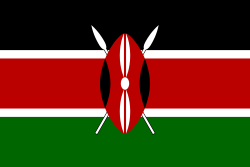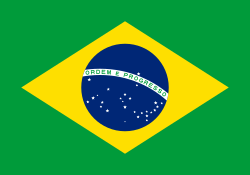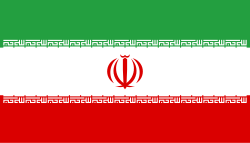Herrarnas flugvikt i taekwondo vid olympiska sommarspelen 2008
| Taekwondo Herrarnas flugvikt | |||
| Information | |||
|---|---|---|---|
| Datum | 20 augusti 2008 | ||
| Deltagare | 16 (beräknat) | ||
| Anläggning | Beijing Science and Technology University Gymnasium | ||
| |||
| |||
| Taekwondo vid olympiska sommarspelen 2008  | ||||
|---|---|---|---|---|
| Flugvikt | Herrar | Damer | ||
| Flugvikt | -58 kg | -49 kg | ||
| Fjädervikt | -68 kg | -57 kg | ||
| Mellanvikt | -80 kg | -67 kg | ||
| Tungvikt | +80 kg | +67 kg | ||
Herrarnas flugvikt i taekwondo vid olympiska sommarspelen 2008 avgjordes den 20 augusti 2008 i Peking.[1]
Medaljörer
| Gren | Guld | Silver | Brons |
| Flugvikt | Mexiko | Dominikanska republiken | Afghanistan |
Kinesiska Taipei |
Format
16 utövare deltog i en vanlig utslagsturnering där den vinnande spelaren avancerade till nästa omgång.
Resultat
| Inledande omgång | Kvartsfinaler | Semifinaler | Final | |||||||||||||||
| 1 | | 3 | ||||||||||||||||
| 16 | | 2 | ||||||||||||||||
| | 2 | |||||||||||||||||
| | 1 | |||||||||||||||||
| 8 | | 4 | ||||||||||||||||
| 9 | | 3 | ||||||||||||||||
| | 3 | |||||||||||||||||
| | 1 | |||||||||||||||||
| 5 | | 4 | ||||||||||||||||
| 12 | | 2 | ||||||||||||||||
| | 2 | |||||||||||||||||
| | 0 | |||||||||||||||||
| 4 | | 0 | ||||||||||||||||
| 13 | | 1 | ||||||||||||||||
| | (SUP) 1 | |||||||||||||||||
| | 1 | |||||||||||||||||
| 6 | | 7 | ||||||||||||||||
| 11 | | 0 | ||||||||||||||||
| | 2 | |||||||||||||||||
| | 3 | |||||||||||||||||
| 3 | | 3 | ||||||||||||||||
| 14 | | 0 | ||||||||||||||||
| | 3 | |||||||||||||||||
| | 2 | |||||||||||||||||
| 7 | | 1 | ||||||||||||||||
| 10 | | 2 | ||||||||||||||||
| | 3 | |||||||||||||||||
| | 2 | |||||||||||||||||
| 2 | | 1 | ||||||||||||||||
| 15 | | 2 | ||||||||||||||||
Återkval
| Omgång 1 | Bronsmatch | ||||
| 1 | |||||
| −1 | 4 | ||||
| 2 | |||||
| 1 | |||||
| 1 | 4 | ||||
| 3 | |||||
Referenser
- ^ https://www.sports-reference.com/olympics/summer/2008/TKW/mens-flyweight.html Arkiverad 6 december 2008 hämtat från the Wayback Machine. Sports-reference.com Men's Fly Weight (engelska)
| ||||||||
Media som används på denna webbplats
Black&white version of Image:Olympic Rings.svg to use in lists where the colored version is too eye-catching
Den Dominikanska republikens flagga består av ett vitt centrerat kors som sträcker sig hela vägen ut till flaggans kant. I mitten på korset sitter ett emblem med en bibel, ett gyllene kors och sex dominikanska flaggor. Emblemet är omgivet av olivkvistar och palmblad. Under emblemet står ”Republica Dominicana” och ovanför ett band med landets mottot ”Dios, Patria, Libertad” (”Gud, Landet, Frihet”).
The national flag of Kingdom of Thailand; there are total of 3 colours:
- Red represents the blood spilt to protect Thailand’s independence and often more simply described as representing the nation.
- White represents the religion of Buddhism, the predominant religion of the nation
- Blue represents the monarchy of the nation, which is recognised as the centre of Thai hearts.
Flag of Portugal, created by Columbano Bordalo Pinheiro (1857–1929), officially adopted by Portuguese government in June 30th 1911 (in use since about November 1910). Color shades matching the RGB values officially reccomended here. (PMS values should be used for direct ink or textile; CMYK for 4-color offset printing on paper; this is an image for screen display, RGB should be used.)
Flag of Iran. The tricolor flag was introduced in 1906, but after the Islamic Revolution of 1979 the Arabic words 'Allahu akbar' ('God is great'), written in the Kufic script of the Qur'an and repeated 22 times, were added to the red and green strips where they border the white central strip and in the middle is the emblem of Iran (which is a stylized Persian alphabet of the Arabic word Allah ("God")).
The official ISIRI standard (translation at FotW) gives two slightly different methods of construction for the flag: a compass-and-straightedge construction used for File:Flag of Iran (official).svg, and a "simplified" construction sheet with rational numbers used for this file.
Pictograms of Olympic sports - Taekwondo. This is unofficial sample picture. Images of official Olympic pictograms for 1948 Summer Olympics and all Summer Olympics since 1964 can be found in corresponding Official Reports.
Belize Flag before August 28, 2019 Standardzations SVG from 3 September 2019 revision by FDRMRZUSA
Chinese Taipei Olympic Flag. According to the official website of Chinese Taipei Olympic Committee, Blue Sky(circle) & White Sun(triangles) above the Olympic rings is neither the National Emblem of the Republic of China, nor the Party Emblem of Kuomintang (KMT), but a design in between, where the triangles do not extend to the edge of the blue circle, as registered at International Olympic Committee in 1981 and digitally rendered in 2013. Besides, the blue outline of the five-petaled plum blossom is broader than the red one. Moreover, the CMYK code of the blue one and the Blue Sky & White Sun is "C100-M100-Y0-K0", and different from the Olympic rings (C100-M25-Y0-K0). Note that it's the only version recognized by IOC.



















